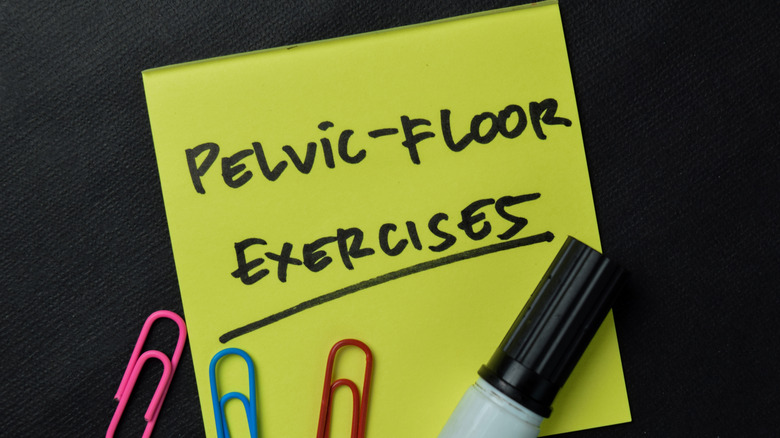Stop Making These Common Mistakes When Trying To Strengthen Your Pelvic Floor
Chances are, you've heard that kegel exercises are good for strengthening your pelvic floor. Whether or not you've had children, tightening your pelvic floor muscles can be good for a number of reasons. However, there's a right way to do them, and you might be making some common mistakes.
The pelvic floor muscles in women support the pelvic organs: the urethra, bladder, intestines, rectum, uterus, cervix, and vagina (via Healthline). The muscles work like a hammock at the bottom of the pelvis, scooping up toward your head when engaged. You can identify them by stopping your urine flow midstream — that tightening sensation felt across the pelvis is the contraction of the pelvic floor muscles. These muscles are important for sexual health and function, urinary health, and stabilizing the hips and trunk. They can be weakened by pregnancy, vaginal birth, menopause, age, prolonged sitting, sexual abuse, and excessive weight. Conditions like endometriosis, irritable bowel syndrome, and interstitial cystitis can also contribute to pelvic floor disorders.
How to strengthen your pelvic floor correctly
If your pelvic floor muscles are weakened, it can lead to different types of incontinence, like leaking a bit of urine when laughing, coughing, or sneezing (via the Mayo Clinic). Kegel exercises, also known as pelvic floor muscle training, work by strengthening the muscles. You can try them out by pretending as if you're sitting on a marble, tightening the pelvic muscles like you're picking up the marble. You can repeat 3 sets of 10 per day.
Most people aren't doing kegels properly, urogynecologist and pelvic floor expert Dr. Betsy Greenleaf told mindbodygreen. If done incorrectly, you could actually put even more stress on your pelvic floor. The first mistake is bearing down as if you're having a bowel movement, which is the opposite of tightening. That straining could put even more pressure on the muscles, defeating the purpose of the exercises. The second mistake is doing kegels while urinating. Many people have been told this is a good way to tighten the muscles, but contracting the bladder over and over can force the urine into the kidneys if it's not let out of the body easily. While this is a good way to initially identify the pelvic floor muscles, it's not recommended as a regular kegel exercise.


